Your cart is empty
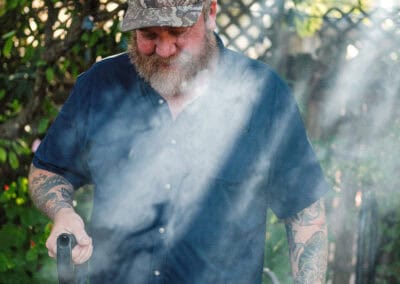
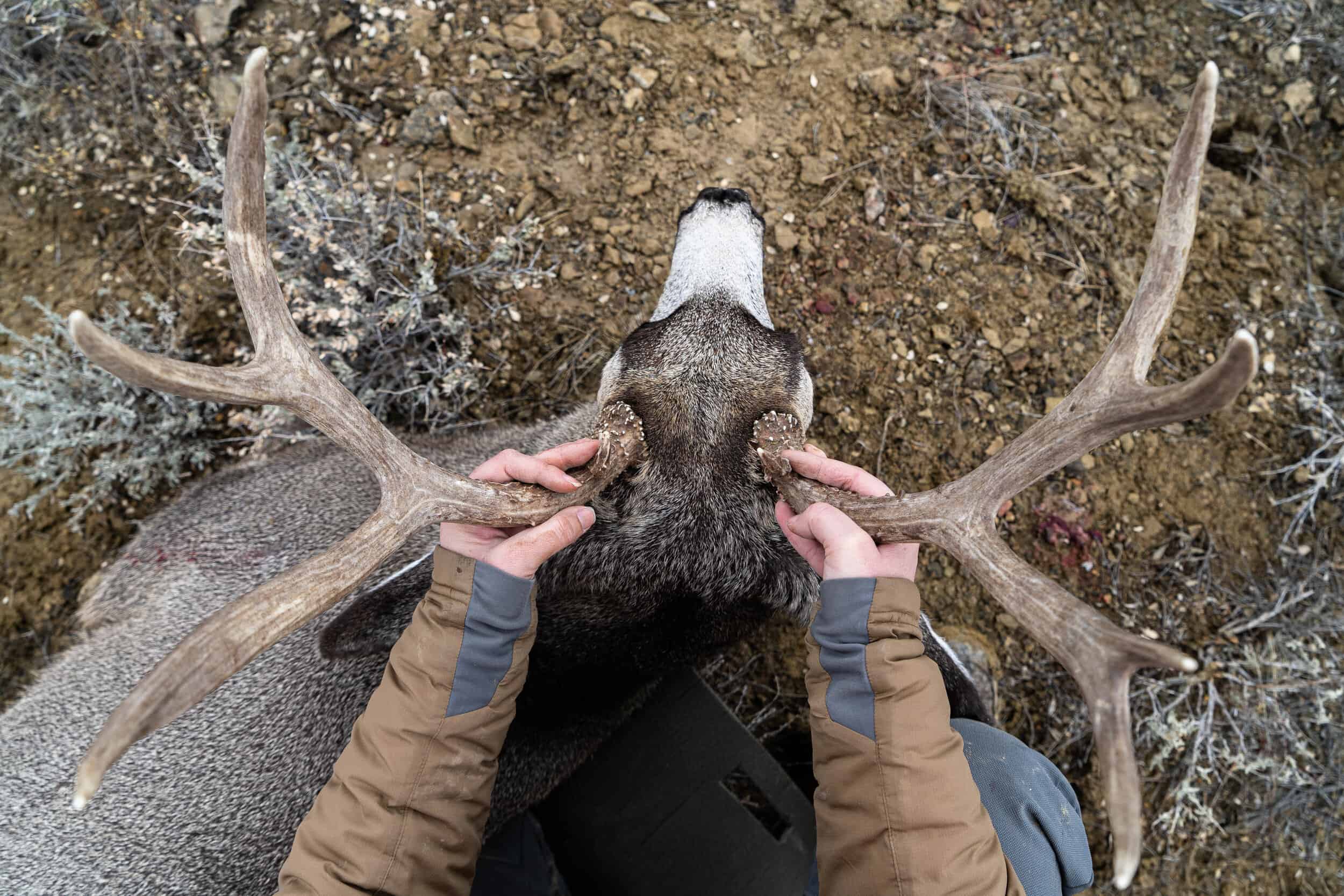
We rise early in the faint alarm clock glow, layering up for the late November cold. Where yesterday the unknown catapulted me from bed, the knowing has me fortifying myself with gas station coffee instead, as we follow the glowing GPS pins into uncharted territory yet again.
Blaze orange sits shotgun in every passing vehicle we meet as we slowly roll down muddy roads in pursuit of something new to me.
We park and head into the great alone on our feet, armed to the teeth. Rick Hutton’s voice tells me of his plan A, B, and C, while detailing every plant we see.
I find a new rhythm following his lead. His back is my beacon — when he stops, I stop and try not to breathe. When he crouches low just shy of skyline, I mirror his movements and learn by what I see; decades of his time spent in the field reflected back to me.
We head higher and higher for a bird’s eye view; we’re smooth and quiet, he more than I, with each new ravine we climb. We stop to look every few yards, and sip by sip the glass reveals more than it did before.
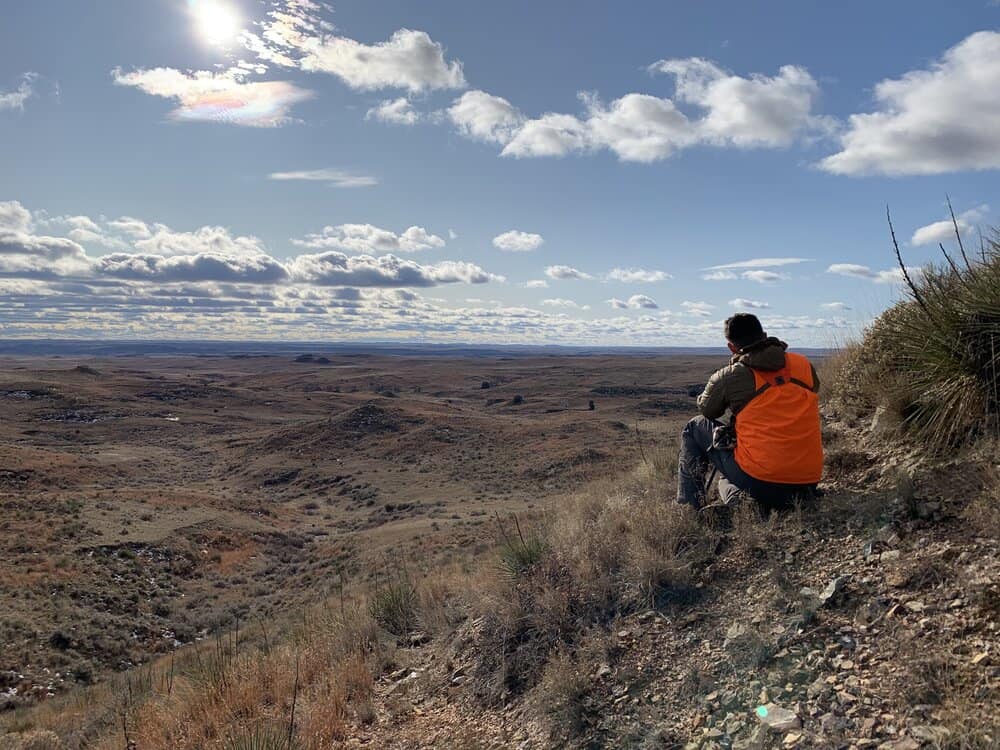
We crest and quietly watch while the world begins to wake. eastern Montana is large and lonely and bitter here where the canyons stretch as far as the eye can see. Riddled with coulees to puzzle, it’s a harsh maze of territory to untangle with your eyes before daring further with your feet. The land looks empty to my passing glance but Rick’s eyes sort out details that are lost to me in a muddled sea of brown and grey. “Game eye” is an acquired thing they say; with binos in hand, I steady my fingers on the bill of my ball cap and steel my eyes to find the details he narrates for me.
An ear here, a nose there, an antler just over there, there are deer everywhere! Traversing ground shrouded in a leopard pattern of snow, the Montana gumbo is a telegram from the night before. Tracks of all shapes and sizes whisper of a rugged terrain teeming with ungulate heartbeats it hides so well.
Mature bucks are moving ahead and Rick’s excited whispers have my heart pounding in my chest. We’re making ground fast and I won’t be able to maintain this speed unless I remember to breathe as Rick lengthens his lead. Up and down ravines, I wonder if every living thing can hear me as we drop to our knees. The spotting scope and information from our GPS confirm that the bucks are bedded on private land and there they may stay. To go or to wait?
We have other bucks in sight, and can only stay until tonight. We map a new course, side-hilling fast and quiet for a better view, only to find these bucks are on the move; lips curled, antlers back, slaves to the movement of distant does farther and farther away.
We crest for lunch, sitting with peanut butter and honey sandwiches in one hand and binoculars in the other. I look back from where we came, marveling at the crass landscape we’ve crossed, and how much I’ve learned from there to here. My instructor is patient, and prodding; there’s a predatory intensity to how Rick moves and rests in this place. The silence from him is deafening as he wrestles to bring this day to fruition for me. I reassure him that this weekend has already been a success for me, a student of struggle and strain, even if the rifle stays holstered to his pack but we have hours to go, and miles to cover yet.
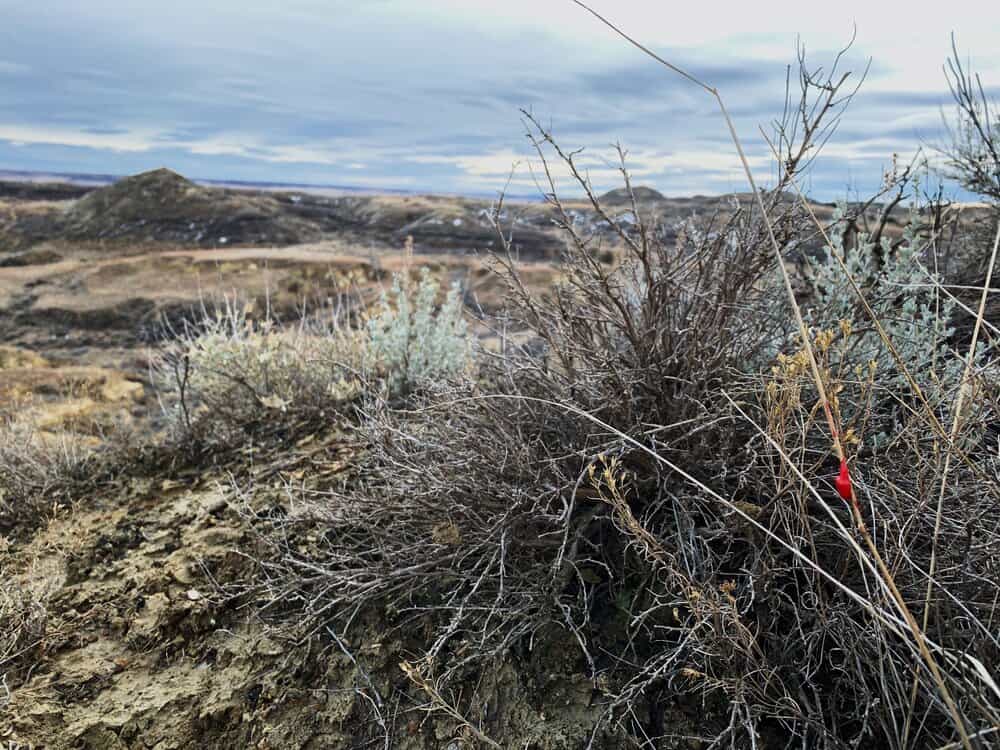
Charting a course to another ridge, we take to our feet again. The mud weighs my steps, and the cold tempers my enthusiasm as we sneak alongside coulees and ford icy creeks.
His backward glance locks on something past my line of sight. He pushes me to the ground and my heart stutter steps in my chest. Across the canyon rim, silhouetted alongside a rocky outcrop, is a broad-chested buck watching our every move.
Rick makes short work of this retread ground where I slip every other stride, steadying myself with every passing sage. “I’ll do the leg work, Lord please provide the harvest,” is my recurring prayer to match my lack of pride.
Rick stops just ahead and I do too. My eyes are trained on him, and the slightest movement of his hand beckons me closer. I obediently take one silent step forward, then two, until I’m frozen by the knowledge of what he had in his view. My buck stands above me, his curiosity and arrogance mingled with my own in an 80 yard stare. Titles of predator and prey fell away as my heart drummed a deafening beat to silence the canyon and coulees and those near me.
In slow motion, Rick hands the rifle to me; in train fluidity, I drop my eye to the sights. I hear nothing but what I can see: horn, hoof and hide, and eyes that bore a hole through me. The buck dares me to move in the absence of fear, my left arm begins to shake with the weight of the gun, I will myself steady. Releasing a fast bullet with a slow exhale, the king of the West inhales his last breath there on his feet. Loss begets gain and he and I are not the first to know pain. Thankfulness abounds as I climb to his grave amongst the sage. Quietly, so as not to wake an endless sleep, with eye-welling reverence for a valiant life lived where few will ever see.

And this is where the work begins, when the wind offers a hallowed reprieve, as the light begins to recede. We settle in for the task at hand, each cut reveals the intricacies that made him such an incredible beast. Piece by piece he’s broken down, ushered from living being to carefully cradled meat. A myriad of emotions, but only one lingers long: gratefulness for the flesh and bone that will sustain my own for months to come.
My world shrinks to the headlamp halo around my feet and the heavy burden strapped to me. I fall, and roll again to my feet, this is my night on repeat. Heckled and encouraged every step of the way, it’s a head-game knowing the truck is still far away.
Weeks later, the backstrap I carried through the night is laid on a Thanksgiving table as an offering to those who mean the most to me. And the gift I was given amongst the prickly pear and sage, lingers on.
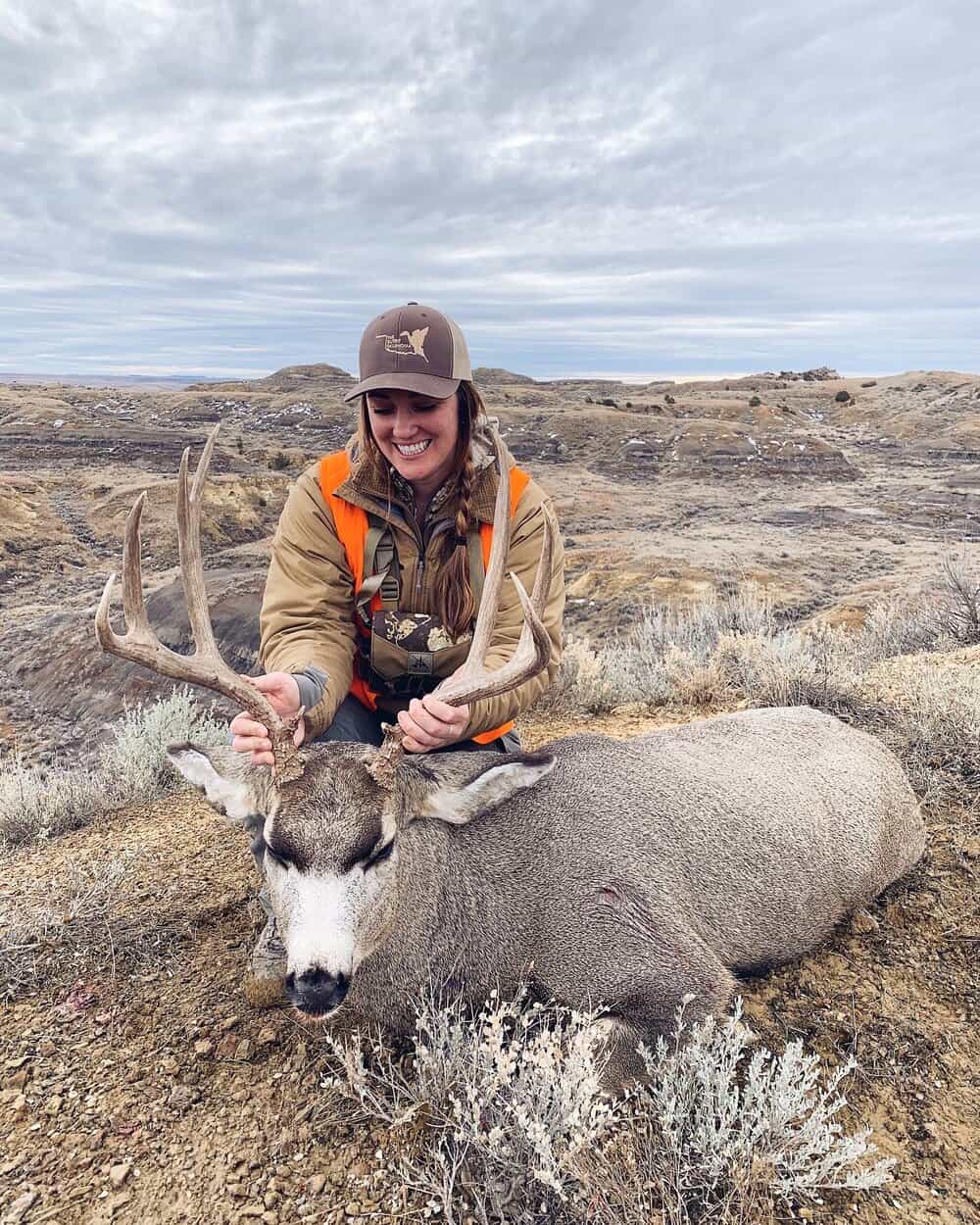
Choose your mentors wisely; patience, persistence and a deep knowledge of the pursued species and landscape are imperative, and Rick Hutton, FHF Gear’s Operations and Creative Content Manager possess these qualities in spades. When someone as seasoned in the field as Hutton, offers to sacrifice their own short window of opportunity in order to teach you, you don’t say no come rain or snow.
Here is where my education came to fruition, as I followed “the professor” up and down ravines amidst a windswept prairie. There is little Hutton doesn’t know about the native and non-native species that call the prairie home. The scientific name for plants that tug at my limbs, and the habits and habitats of the angulates we seek are narrated to me throughout the days. Countless miles, and endless waits that will shape and direct my hunts for years to come.
These are the lessons learned mule deer hunting in the rugged coulees of eastern Montana, following Hutton’s lead.
To be successful in country as big and intricate as eastern Montana you need to be efficient with your time and energy — to do so you’ll need good glass. Having the best quality glass you can afford is one thing but also keeping your binos easily accessible is key. These are your main weapon, and you’re not deadly without them. Luckily high-quality glass and bino harnesses are more accessible than ever.
In order to use the glass to your advantage you need to “Peel the Onion.” “A lot of hunters leave the truck and march to a knob and glass from there,” explained Hutton. “While walking to that point, they’re ignoring that new terrain that is opening up and closing out. You should be constantly glassing, taking a few steps and glassing again to pick apart where you think there might be wildlife, and working the land like that.”
Use your legs. While it’s easy to hunt from the truck, getting out and covering terrain on foot will present a lot more opportunities. You can’t see it all from the truck, and what you’re looking at has already been looked over by other hunters.
“Suck it up, and walk,” added Hutton. “Getting out of the truck for a different perspective could mean spotting a bedded buck that you would have otherwise missed.”
The key to glassing in eastern Montana is looking for horizontal lines or key features. You’ll be searching for a brown deer on a very brown landscape with little-to-no variations in the color contrasts. Horizontal Line Theory: not much vegetation in nature creates horizontal lines, most exhibit vertical lines because they are reaching towards a light source ie. grass, timber etc. When you catch a horizontal line, that’s usually an ungulate – you’re finding deer not based on contrast but by the edges of their face, and ears. As you keep this in mind while glassing, you’ll develop a quick sense for the horizontal lines in the field.
Tripods are an easy way to take your glassing to the next level. No matter how steady your hand is, there will always be some shake happening. Placing your binos on a tripod and removing that shake will allow you to focus more easily, even on a lower binocular magnification. “Put your binos on a tripod and give it a shot,” Hutton says adamantly. “I promise you will see more deer!”
The better understanding you have of the landscape you’re hunting, the more opportunities you will create for yourself in the field.
Use the wind to your advantage – if there are strong winds, the deer will bed down on the leeward sides of ridges and coulees. You can concentrate your time there knowing that’s where they will be in those conditions.
You’re glassing habits should match the movement of deer. Knowing whether to glass for 10 minutes or an hour is determined by environmental factors. If it is noon on a windy day when deer will be bedded, there is no need to waste energy glassing frequently. If it is calm during the last hour where they will be up on their feet feeding, it would be wise to keep the glass up often.
Know the vegetation – how high is the vegetation? Looking over country with very short cover, you should be able to spot a bedded deer more easily so glassing out that area shouldn’t take long. However, if the cover is tall, a buck could be bedded and fully hidden so it will take more time glassing over that area.
“On a cold calm evening, deer are going to be on their feet, and if I’m not seeing anything I need to move to a new vantage point because I must be missing them,” explained Hutton. “In howling winds, I anticipate that deer are not standing up until it’s getting dark so I take my time and pick apart bedding locations. Vegetation, temperature, and wind will determine where and how long you glass.”
Hutton Hot Tip: If you’re using tools like GPS, turn your private/public boundary layers off and just look at the map for mule deer habitat. Find where you believe a mule deer will be on that landscape and put a pin there, then turn your layers back on and find the points where public land crosses your pins.
According to Hutton, “A lot of people want to gravitate towards the big chunks of public. But you have got to go where the deer are and where the habitat is the best. So that may very well end up being a small chunk of public land near a lot of private land that you may have overlooked.”

In country as harsh and unforgiving as Montana in late November, gear is the key to staying out there as long as you need to fill your tag. I’m incredibly grateful for the people who pushed me to gear up when my prior “make do with what you got” mentality would have made my mule deer hunt unnecessarily painful.
Borrowed and bought, the list of gear below kept me focused on the hunt and not what I was wearing or carrying in the field.
I was carrying the Vortex Viper 10×42 and was blown away by the detail and clarity I was able to pick up in the canyons and coulees we were scouting, as I worked on developing my “game eye.”
Keeping your bino’s easily accessible is key. FHF Gear’s Pro-M Bino Harness made sure I used my best weapon to my full advantage. While hiking and glassing every few yards from sun-up to sun-down, I was super thankful for how quiet, lightweight, and functional my Bino harness was; being able to open and close it one-handed without looking down made a huge difference. It kept everything organized and right where I needed it to be.
We covered a lot of rugged terrain on my mule deer hunt, and I was super happy with how my Danner Vital Insulated 400g boots carried me through the mud and snow, up rocky ridgelines, and down in icy creeks. They were a late-season purchase, with only a few inaugural hikes under their tread before my hunt. We covered 10 plus miles the first day, and while I was exhausted by the end it wasn’t because of my feet; which stayed warm and dry despite the varying conditions. Highly recommend them as a starter boot before you commit to a larger investment boot.
All about that base layer — and it doesn’t get much better than the First Lite Kiln Midweight 250 Merino-X Hoody. Super soft, comfortable, wicks well, dries quickly and didn’t smell all that bad after two days of hunting.
Loved this mid-layer grid fleece by First Lite as well. It has great moisture transfer and on warmer hunting days this season, I stripped down to this Klamath Hoody when I was hiking and it kept me comfortable despite the wind.
I learned that hunting is basically just layering-up and layering-down all day. Despite the late November cold and windchill factor, this jacket did an incredible job of keeping me warm, while also being quiet whether we were on the move or posted up on a ridge glassing. It’s extremely breathable for an insulted puffy, you can wear it while on the move without getting clammy – I highly recommend the Sitka Kelvin Light Hoodie!
I’m sold on the Sitka Timberline Pants after this hunt! Great to hike in, and I very much appreciated the reinforced knees and butt. They kept me warm, and dry despite how many times I fell down muddy ravines in the dark during our pack out.
The Stone Glacier Xcurve Frame with the R3 3300 Bag is by far the best pack I’ve ever strapped to my back. Incredibly strong and comfortable for how lightweight it is made. I carried a lot more weight during our pack out than I’m used to over quite a few miles and I was shocked to wake up the next day and find that my back, shoulders, and chest weren’t the least bit sore! The load-bearing system on these packs is well worth the investment.
Rick Hutton’s Tikka T3 Lite chambered in .300 Winchester Magnum topped with a Leupold Vx3-LRP 4.5-14x is such an incredible hunting rifle. I had complete confidence in that firearm which made all the difference when it came time to take my shot. We had practiced and planned for me to make a prone shot on my hunt, however, circumstances dictated that I take my shot freehand while standing and I’m very grateful that this was the rifle I was holding.
Full disclosure: When we stopped to glass, I often dug this puffy out of Hutton’s pack to add to my own layering system. It’s unbelievably warm and light, and I won’t go on a late-season hunt without one from now on. Thank you, Rick, for being generous with me and letting me steal your First Lite Chamberlin Down Puffy more than once.
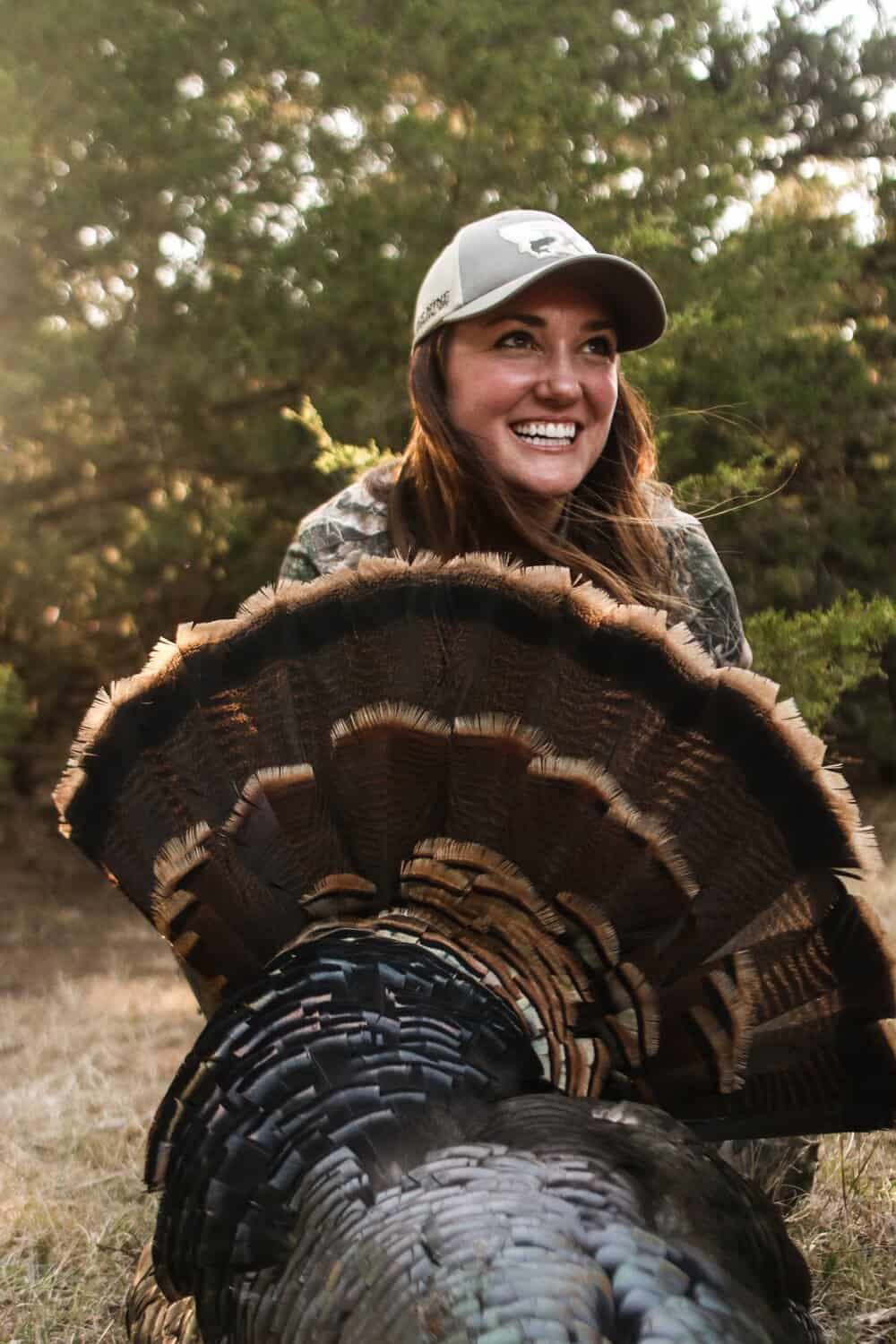
Katie is a Montana-based writer and editor with a passion for people and their stories. Raised on a cattle ranch near Yosemite National Park she’s enamored by wide open spaces and the written word. Serving as digital and print editor for Modern Huntsman, you’ll likely find her, pen in hand, documenting the history and tradition, the beauty and adventure to be found hunting, fishing and ranching the American West.
Connect with her @KatieCMarchetti
Related Stories

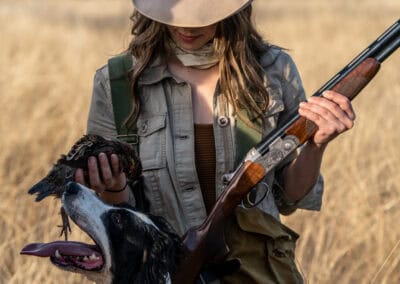

Latest Stories


